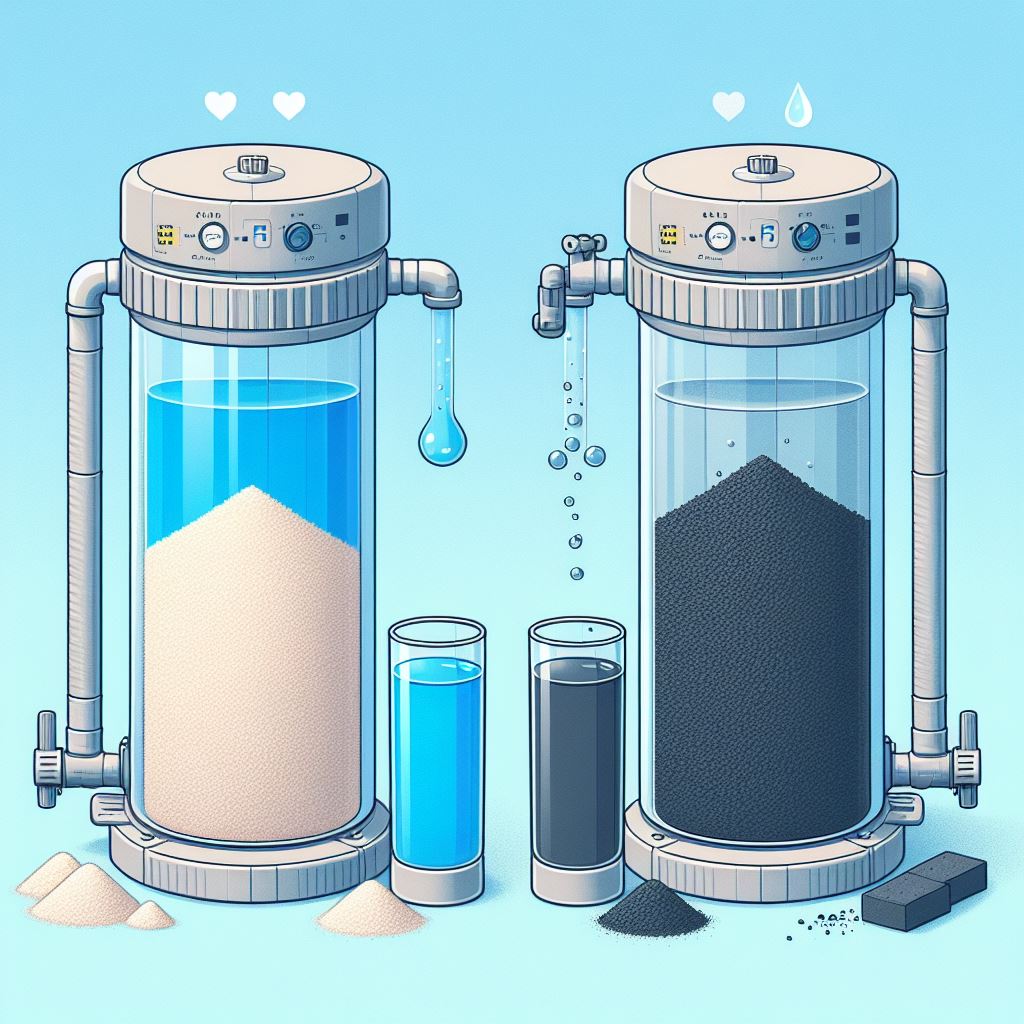Activated carbon and quartz sand are two common materials used as filter media in the field of water treatment, playing crucial roles in removing impurities and improving water quality. However, despite being common filtering materials, they exhibit distinct differences in their physical, chemical properties, and application areas. This article aims to delve into the differences between activated carbon and quartz sand, providing readers with a better understanding of their applications in water treatment.
In the water treatment process, selecting suitable filter materials is a key step to ensure water quality meets standards. Activated carbon and quartz sand, as two common filter media, differ significantly in terms of filtering efficiency, usage conditions, and costs. Therefore, a comprehensive understanding of their characteristics is essential for making the right choices in utilizing these materials.

Quartz Sand Filter
- Filler Characteristics: Internally filled with quartz sand, with particle sizes typically ranging from 0.5-1.2mm, 1-2mm, 3-4mm, etc.
- Principle of Operation: Primarily relies on the fine particles of quartz sand for dense filling, effectively intercepting and retaining solid particle impurities in the water. It has a limited effect on organic substances and ions dissolved in water, mainly trapping insoluble solid particles.
- Why Choose Quartz Sand: Quartz sand has high hardness and durability, making it resistant to breakage during operation or backwashing. Regular sand is less sturdy, prone to breakage during operation, potentially causing water pollution. In conflicts between backwashing and regular washing, ordinary sand is susceptible to breakage, affecting the filter’s lifespan.
- Specialized for Water Treatment: Due to the characteristics of quartz sand, it is necessary to use specially designed quartz sand for water treatment, rather than simply using common river sand, to ensure filtering efficiency and material stability.
Activated Carbon Filter
- Filler Characteristics: Internally filled with activated carbon filter media, which contains numerous micro-pores.
- Principle of Operation: Activated carbon primarily relies on the powerful adsorption ability of its micro-pores to adsorb organic substances, colloids, ions, and other impurities in water, achieving the filtering effect. In contrast, the principle of operation for an activated carbon filter is adsorption.
- Quality Differences in Activated Carbon:
- Iodine Value:
- Definition: Iodine value is an indicator assessing the adsorption capacity of activated carbon, representing the amount of iodine adsorbed per gram of activated carbon (mg/g).
- Relationship with Adsorption: A higher iodine value indicates a stronger adsorption capacity of activated carbon. This means activated carbon can more effectively adsorb organic substances, colloids, ions, and other impurities in water, enhancing the filtering effect.
- Strength:
- Definition: The strength of activated carbon refers to its resistance to breakage, indicating whether it is prone to breakage during operation or backwashing.
- Factors Influencing Strength: Activated carbon strength is influenced by factors such as raw material quality and preparation processes. Activated carbon with lower strength is more susceptible to breakage during use.
- Issue: Activated carbon with lower strength may break during backwashing, leading to the mixing of fragments into the water, resulting in a darkened water appearance. This not only affects water quality but may also reduce the filter’s lifespan.
- Iodine Value:
- Impacts:
- Filtering Effect: The iodine value and strength of activated carbon directly impact its filtering effect. Activated carbon with a higher iodine value can more effectively remove pollutants from water, and high strength ensures stability during use.
- Lifespan: Activated carbon with lower strength is prone to breakage, leading to fragment release and potentially reducing the filter’s lifespan. Choosing activated carbon with a higher iodine value and better strength can extend the filter’s lifespan.
- Price Differences: Activated carbon with different iodine values and strengths exhibits significant price differences in the market. Choosing the appropriate activated carbon filter material depends on specific requirements.
In summary, activated carbon and quartz sand as filter media each have unique advantages in water treatment. When making choices, it is essential to consider the characteristics of the water source, treatment goals, and the actual application environment. Whether activated carbon or quartz sand, they are indispensable components in water treatment engineering, offering various options to ensure the availability of clean and healthy water resources.
